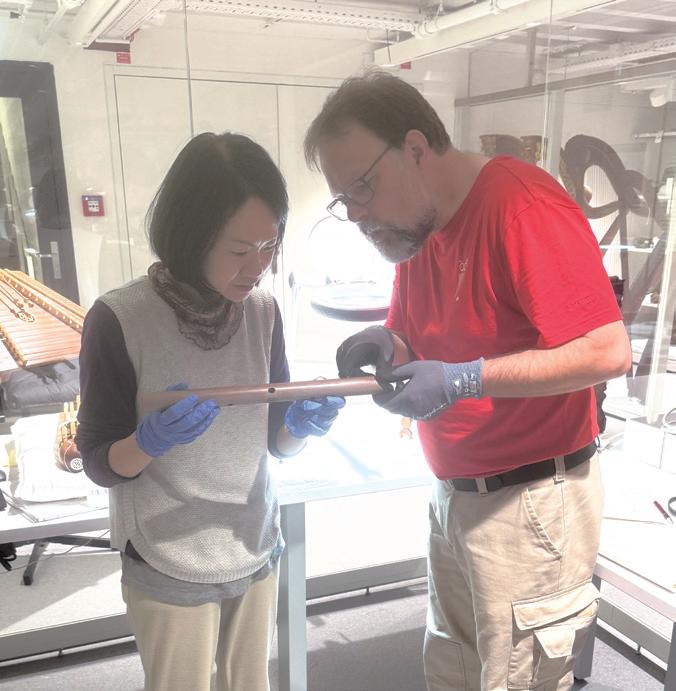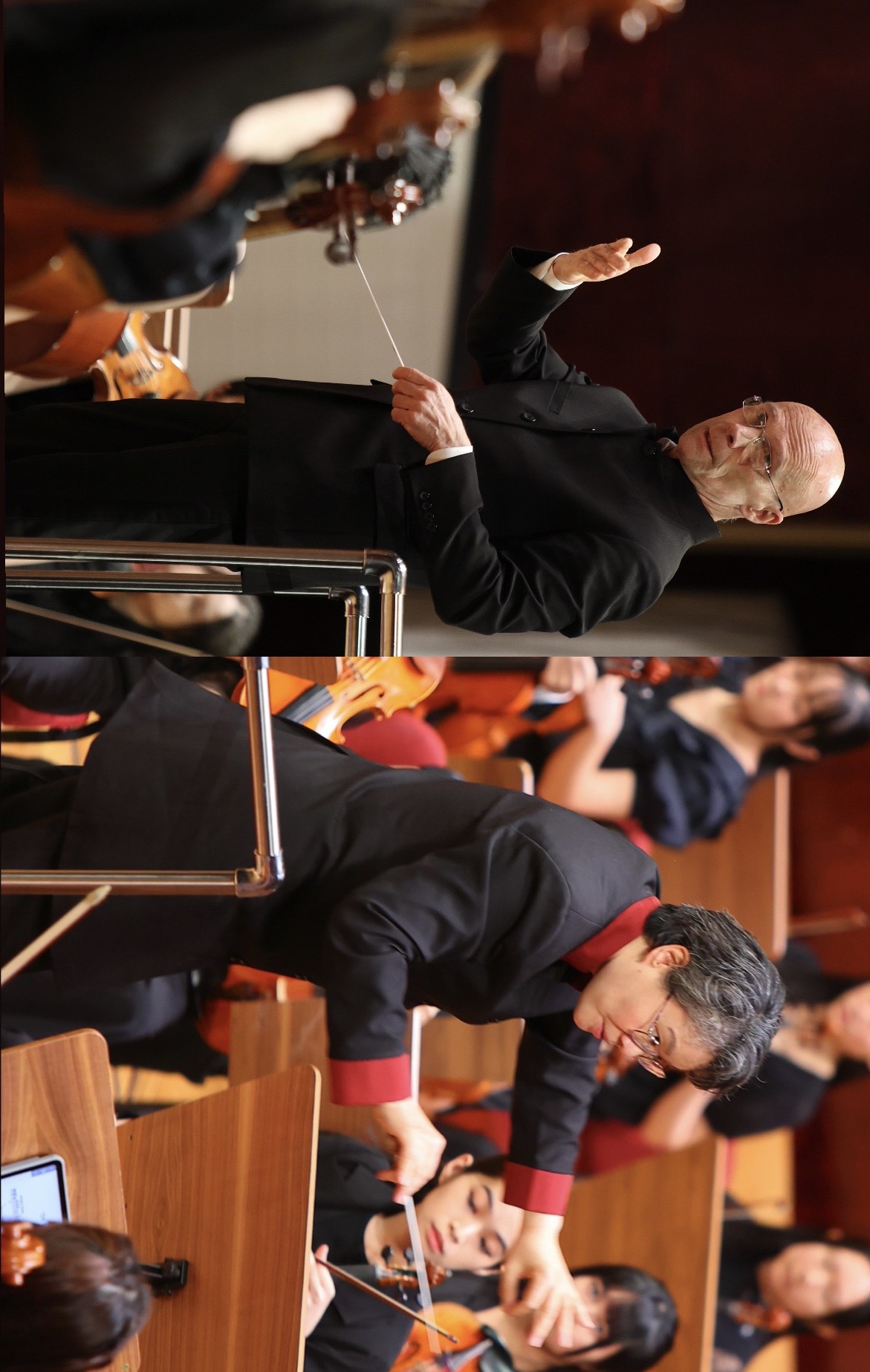
6 minute read
Performing Knowledge
NTNU faculty have recently contributed to research at the intersection of music, technology, and the performing arts.
Predicting Emotions in Music with AI
Cheng-Kai Lu, Department of Electrical Engineering
How do machines learn to “feel” music? A recent study developed a deep learning model that predicts emotional responses to music. Using Emotify, a dataset with 400 music clips labeled with emotions like calmness, joy, nostalgia, and tension, they trained a 1D Convolutional Neural Network (1D-CNN) to recognize patterns in sound. By analyzing audio features known as MFCCs (commonly used in speech and music analysis), the model achieved 93% accuracy across nine emotional categories. The team also expanded the dataset through audio segmentation to improve learning. While the system struggled slightly with underrepresented emotions like “amazement,” it showed strong potential for real-world use in music recommendation, emotional tracking, or therapeutic applications. (Lu, C.-K., Lin, Y.-J., & Shen, J.-Y. (2023). “Emotion Prediction in Music Based on Artificial Intelligence Techniques.” IEEE Explore.)
Computing Once More with Feeling
Yi-Cheng Lin, Computational Thinking and Programming Education Division
This study introduces a novel dataset that connects classical piano performance with the expressive cues encoded in musical notation. While previous datasets have captured variation in musical expression, they often omit direct links to the written score. In contrast, this collection systematically associates performance characteristics with five specific markings: forte, piano, cantabile, leggiero, and con forza. To build the dataset, professional pianists recorded short musical excerpts, each performed with a deliberate emphasis on one expressive instruction in isolation. This method yields a controlled and granular resource for examining how particular markings shape timing, dynamics, and articulation in real-world interpretations. The dataset serves as a foundation for developing computational models that render symbolic scores into musically expressive performances. By aligning annotated score data with detailed performance recordings, this work advances ongoing research in expressive artificial intelligence and opens new avenues for music technology and creative human-AI collaboration. (Hung, T.-C., Tang, J., Armstrong, K., Lin, Y.-C., & Liu, Y.-W. (2024). “EME33: A Dataset of Classical Piano Performances Guided by Expressive Markings.” 2024 IEEE International Conference on Big Data (BigData), 3174–3180.)
Teaching Machines to Read Music, One Instrument at a Time
Berlin Chen, Department of Computer Science and Information Engineering
Transcribing music by ear is a complex task, especially when multiple instruments are playing at once. This study introduces a model for multi-instrument automatic music transcription (AMT) that addresses this challenge by integrating instance segmentation and self-attention. The proposed system treats musical events as instances to be segmented from a polyphonic audio input, then classifies each event by pitch and instrument type. Drawing on methods from computer vision, this approach enables joint onset-offset detection and labeling, allowing for instrument-specific transcription at the frame level. Unlike earlier AMT models that often rely on convolutional or recurrent neural networks, this method leverages self-attention to capture longer-range dependencies in time. As a result, it offers improved scalability and generalization across complex audio scenes without the need for instrument-specific models. (Wu, Y.-T., Chen, B., & Su, L. (2020). “Multi-Instrument Automatic Music Transcription with Self-Attention-Based Instance Segmentation.” IEEE/ ACM Transactions on Audio, Speech, and Language Processing, 28, 2796–2809.)
Hakka Hymns and the Negotiation of Identity in Postwar Taiwan
Hsin-Wen Hsu, Graduate Institute of Ethnomusicology
This study explores how Hakka-language hymns have served as both religious expressions and cultural negotiations for Hakka Christians in Taiwan. While missionary outreach began in the 1930s, it wasn’t until the 1980s that hymn composition in Hakka gained institutional support. Since then, Christians from various denominations have engaged in the composition and compilation of Hakka hymns, with some collaborating to promote the use of local language and musical traditions in worship. These hymns have become tools for negotiating ethnic identity alongside Christian belief, resonating not only in Taiwan but also among Hakka communities in Hong Kong, Malaysia, Singapore, and Indonesia. Through historical analysis and close readings of hymn texts, this research demonstrates how musical and lyrical choices mediate tensions between sacred values and everyday social ethics. In doing so, the study sheds light on how religious practice is shaped by cultural identity and how minority communities adapt global faith traditions to local contexts. (Hsu, Hsin-Wen. “The Making of Hakka Hymns in Postwar Taiwan: Negotiating Identity Conflicts and Contextualizing Christian Practices.” Resounding Taiwan: Musical Reverberations Across a Vibrant Island, edited by Nancy Guy, Routledge, 2021, pp. 105–123.)
Art Song as Cultural Translation in Early 20th-Century China
Joys H. Y. Cheung, Graduate Institute of Ethnomusicology
How did early Chinese composers respond to the challenges of adapting Western art song to local aesthetics and linguistic rhythms? A 1931 exchange between two early proponents of Chinese art song reveals how the genre became a site for negotiating musical identity. Zhao Yuanren, a US-educated linguist and composer, and Qing Zhu, a German-educated intellectual and editor of Yueyi (Musical Art), the journal of the National Conservatory of Music, published a debate that highlighted contrasting compositional priorities: Zhao emphasized the tonal and rhythmic features of the Chinese language, while Qing focused on musical structure and internal flow. Both viewed art song as a medium for expressing Chinese poetic sentiment, but differed in their approaches.The chapter appears in The Art Song in East Asia and Australia, 1900 to 1950, a volume co-edited by Cheung. Featuring 20 essays by scholars from Japan, Korea, China, Taiwan, and Australia, the book explores how art song mediated the tension between cosmopolitan aesthetics and local cultural identities across early 20th-century East Asia.(Cheung, J. H. Y. (2023). “Composition, commentary and collegiality in the translated modernity of early Chinese art song,” in A. M. Tokita & J. Cheung (Eds.), The Art Song in East Asia and Australia, 1900 to 1950 (pp. 146–160). Routledge.)
Staging the Anthropocene: Imagining Taiwan’s Future Through Theatre
Wen-Ching Liang, Graduate Institute of Performing Arts
This study examines how contemporary Taiwanese theatre responds to the challenges of the Anthropocene through speculative storytelling and immersive performance. Focusing on Taipei Notes (2017), 1984: The Family Life of Three Sisters (2017), and What Colour is the Cloud? (2016), the article explores how artists use fragmented timelines, multilingual dialogue, and striking scenography to reflect on ecological collapse, surveillance, and cultural memory. Rather than relying on realism, these productions imagine dystopian or posthuman futures shaped by resource scarcity and displacement, while also engaging Taiwan’s unique geopolitical and environmental contexts. Taipei Notes, for instance, reframes global conflict through everyday conversations in a Taipei museum, while What Colour is the Cloud? presents a haunting vision of extinction in Hakka-speaking Taiwan.Blending environmental humanities and theatre studies, the article considers how performance can help audiences confront uncertainty and imagine alternative futures in a time of planetary crisis. (Liang, L. W. C. (2021). “Imagining the Future in the Anthropocene on the Taipei Stage: What Colour is the Cloud? (2016), Taipei Notes (2017), and 1984 (2017).” Tamkang Review, 52(1), 3-22.)







